Multani Blue Pottery , with its beauty and gracefulness, for centuries has been a treasure enjoyed by artisans, collectors, and connoisseurs alike, lying in the very heart of Pakistan’s busy cultural life. The fine craftsmanship that appears to murmur secrets from an ancient past while dazzling with modern flair is simply a wonder. Multani blue pottery is rich with intricate designs, bright colors, and unparalleled craftsmanship, a rarity rarely seen in human creativity and a tribute to resilience across centuries-a true glory of skill in handicrafts.
Table of Contents
A Glimpse into History: The Origins of Multani Blue Pottery:
Multan has a long tradition of being the melting pot of cultures, ideas, and traditions: “City of Saints”-for a reason. This glorious city has a history of more than 5,000 years, making it one of the oldest cities in South Asia and by far. Out of this honored heritage came blue pottery-art that was considered introduced during the Mughal period. For all intents and purposes, Multani Blue Pottery with a combination of Persian aesthetics, techniques of Chinese porcelain, and indigenous craftsmanship was molded into a peculiar style-the style of superb melding of beauty and function.
Blue pottery is what the art owes its birth to. The name is derived from the cobalt blue, the specific color that signifies serenity, depth, and eternity. This craft, reckoned with Multan, had, in course of time, earned international fame through its artistry. Against culture and decaying patrons, the artisans of Multan have brought this legacy to survive and shine like bright, shining beacons of cultural pride.
The Craftsmanship Behind the Magic:
To truly appreciate Multani Blue Pottery, one must delve into the painstaking process behind its creation. Unlike mass-produced ceramics, each piece is a labor of love, requiring skill, patience, and unwavering dedication. Here’s a glimpse into the meticulous steps involved:
1.Material Preparation :
The foundation of blue pottery lies in its raw materials—quartz powder, glass frits, and clay sourced locally from the region. These components are carefully ground and mixed to create a smooth dough-like consistency.
2.Shaping the Form :
Using traditional tools or even their bare hands, artisans mold the mixture into various shapes, ranging from delicate vases and plates to ornate tiles and lampshades. Each form is crafted with precision, reflecting both symmetry and individuality.
3.Drying and Firing :
Once shaped, the pieces are left to dry under the sun before being fired in a kiln at temperatures exceeding 800°C. This initial firing hardens the structure, preparing it for decoration.
4.Decoration and Glazing :
This is where the magic truly happens. Artisans hand-paint intricate patterns using natural pigments, primarily cobalt blue and turquoise, complemented by touches of white and yellow. Motifs often include floral designs, geometric patterns, and calligraphic inscriptions inspired by Islamic art. After painting, the pieces are glazed and fired again, resulting in a glossy, durable finish.
5.Final Touches :
Before reaching the hands of admirers, each piece undergoes rigorous quality checks to ensure perfection. No two items are identical, as every stroke of the brush carries the artisan’s personal touch.
The Heart of People Finds Attraction in Multani Blue Pottery:
Multani Blue Pottery gains its unmistakable appeal through both its visual qualities and its deeply meaningful representation. The color blue in the pottery forms a spiritual aura which brings calmness through its connection to the endless skies and peaceful oceans. The detailed patterns of Multani pottery reveal tales about various spiritual beliefs and traditional customs which unite all people across the globe.
The functional and decorative aspects of Multani Blue Pottery unite to bring beauty into daily life. These creations serve a dual purpose as they function as practical items for daily use while simultaneously providing extraordinary decorative value.
People who collect art worldwide together with interior decorators show great respect for Multani Blue Pottery because it changes any environment. Displayed in any space from simple home interiors to luxurious museum exhibitions, the pottery immediately draws viewers’ gaze toward discussions about artistic expression and cultural heritage and personal background.
Difficulties and Revival Initiatives:
In a world where sophistication is often immediately valued, the allure of Multani Blue Pottery faces many difficulties. Young people increasingly want urban, white-collar jobs and there are fewer apprentices to learn and continue the tradition of this ancient craft. When modern mechanized pottery is produced in great volumes for a fraction of the price of handmade wares, journeys in skilled hand-craft traditions are threatened.
Nonetheless, various revitalization strategies acknowledge the need for change and the potential to revive this impactful craft. Organizations such as UNESCO and some local NGOs offer training, funding, and markets for artisans. Multi-media platforms and new products developed with contemporary designers certainly seem to help a younger audience imagine the world’s possibilities bridging past, present, and future hand-crafting traditions.
Preserving a Legacy: What You Can Do
As art and culture enthusiasts, we all play a part in helping preserve treasures like Multani Blue Pottery. Here are just a few ways you can help:
– Support local artisans : Buy authentic pieces from artisans or reputable retailers. Your purchase supports people and families, not just a product.
– Spread awareness : Tell friends and family about the story of Multani Blue Pottery. Share on your social media pages. Knowledge is power and we make things special by teaching others.
– Advocate for fair trade : Support policies that protect artisan’s rights and living wages.
– Be inclusive : Celebrate traditional crafts recognizing them as representations of richness and diversity.
Conclusion: A Living Masterpiece:
Multani Blue Pottery is not just an art. It is a living testament of history, culture, and emotion. It takes us back to the beauty of existence when human hands parse for raw materials and elegance is born. While we even dropped of uneven growth we will light up and then we’ll remember the llived hands. I am not sure who it is but your beauty is a love affair with the soul.
We live in a climate, laden with transience and disposability, Multani blue pottery is an invitation to slow down, to observe, to question, and to truly value nature and very existence. Much like a cinema-worthy journey award-winning motion, for example, Multani blue pottery will glue the atmosphere leaving us exhaled, there toppings reflected again before we are bent back toward earth, as if to remind ourselves how impossibly thoroughly we created beauty in a world of tribulation. Now with gone to past the delightful, the experience lives to wake once more.
So, the next time you grasp or pick upon the often confused relationship that explains that component of what representation can supply. Hold onto that vase or tile and be aware of what you are feeling; you are holding a piece of eternity lovingly extricated from a bracket of desire and dream from someone whose living and dream were in blue.
1. What is Multani Blue Pottery?
Multani Blue Pottery is a traditional art form from Multan, Pakistan, known for its vibrant blue glaze and intricate designs. It originated from Central Asia and was introduced to Multan centuries ago.
2. What materials are used in making Multani Blue Pottery?
The pottery uses a combination of white and red clay, along with quartz stone powder, powdered glass, borax, gum, and Multani mitti (fuller’s earth) 9.
3. What is the cultural significance of Multani Blue Pottery?
Multani Blue Pottery is a cherished cultural treasure of Multan, reflecting centuries-old craftsmanship and heritage. It is celebrated for its cobalt hues and artistic designs that turn everyday items into pieces of history.
3 responses to “Multani Blue Pottery : The Timeless Elegance of a Symphony of Art and Heritage”
-
[…] complex patterns and motifs characteristic of Multani Blue Pottery , such as floral designs, geometric shapes, and nature-based motifs, are a great complement to […]
-
[…] the many arts and crafts in India, few, if any, are as radiant as Multani Blue Pottery . This beautiful art form has been around for many centuries, and is a part of the Indian cultural […]
-
[…] a world dominated by mass production and often tainted by homogenization, Multani Blue Pottery shines brightly as testament to human creativity and cultural identity. The traditions of this […]
3 responses to “Multani Blue Pottery : The Timeless Elegance of a Symphony of Art and Heritage”
-
[…] complex patterns and motifs characteristic of Multani Blue Pottery , such as floral designs, geometric shapes, and nature-based motifs, are a great complement to […]
-
[…] the many arts and crafts in India, few, if any, are as radiant as Multani Blue Pottery . This beautiful art form has been around for many centuries, and is a part of the Indian cultural […]
-
[…] a world dominated by mass production and often tainted by homogenization, Multani Blue Pottery shines brightly as testament to human creativity and cultural identity. The traditions of this […]

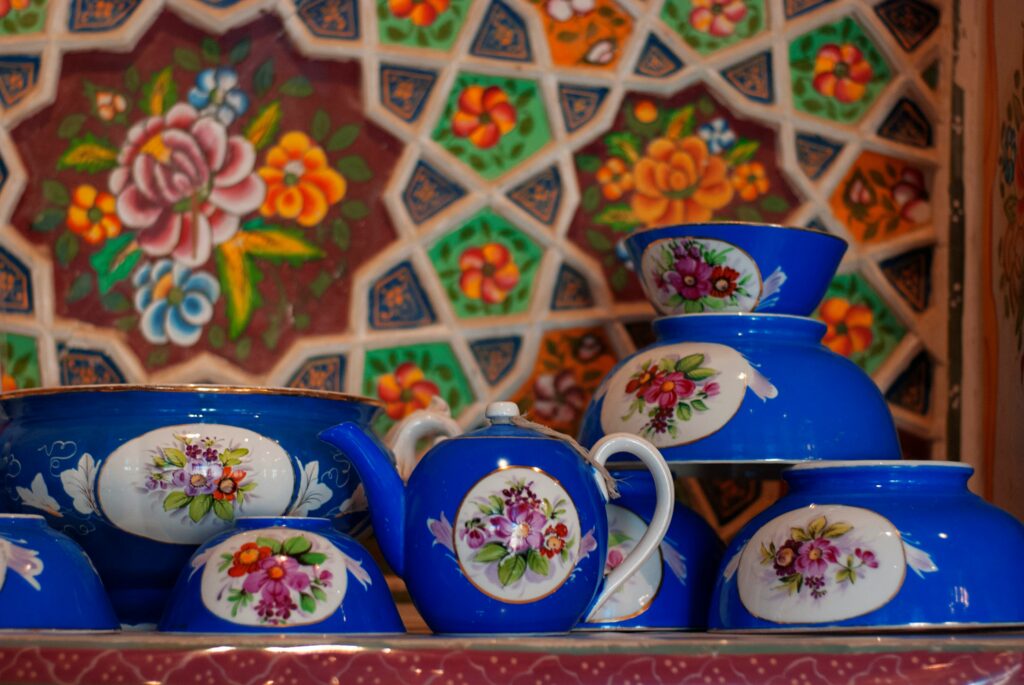
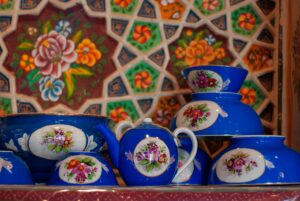
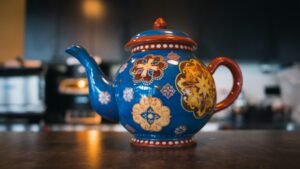
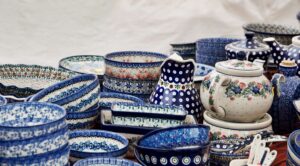
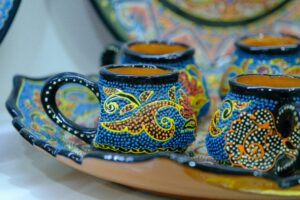
Leave a Reply